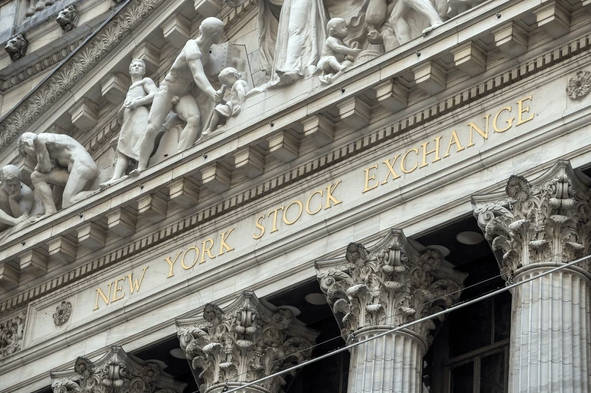
Ultima Markets App
Trade Anytime, Anywhere
Important Information
This website is managed by Ultima Markets’ international entities, and it’s important to emphasise that they are not subject to regulation by the FCA in the UK. Therefore, you must understand that you will not have the FCA’s protection when investing through this website – for example:
- You will not be guaranteed Negative Balance Protection
- You will not be protected by FCA’s leverage restrictions
- You will not have the right to settle disputes via the Financial Ombudsman Service (FOS)
- You will not be protected by Financial Services Compensation Scheme (FSCS)
- Any monies deposited will not be afforded the protection required under the FCA Client Assets Sourcebook. The level of protection for your funds will be determined by the regulations of the relevant local regulator.
Note: Ultima Markets is currently developing a dedicated website for UK clients and expects to onboard UK clients under FCA regulations in 2026.
If you would like to proceed and visit this website, you acknowledge and confirm the following:
- 1.The website is owned by Ultima Markets’ international entities and not by Ultima Markets UK Ltd, which is regulated by the FCA.
- 2.Ultima Markets Limited, or any of the Ultima Markets international entities, are neither based in the UK nor licensed by the FCA.
- 3.You are accessing the website at your own initiative and have not been solicited by Ultima Markets Limited in any way.
- 4.Investing through this website does not grant you the protections provided by the FCA.
- 5.Should you choose to invest through this website or with any of the international Ultima Markets entities, you will be subject to the rules and regulations of the relevant international regulatory authorities, not the FCA.
Ultima Markets wants to make it clear that we are duly licensed and authorised to offer the services and financial derivative products listed on our website. Individuals accessing this website and registering a trading account do so entirely of their own volition and without prior solicitation.
By confirming your decision to proceed with entering the website, you hereby affirm that this decision was solely initiated by you, and no solicitation has been made by any Ultima Markets entity.
I confirm my intention to proceed and enter this website Please direct me to the website operated by Ultima Markets , regulated by the FCA in the United KingdomWhat Is US30: Understanding the Dow Jones
If you are searching for what is us30, you are asking about the Dow Jones Industrial Average, a classic U.S. stock market benchmark. In simple terms, what is us30 refers to an index of 30 blue-chip American companies that many traders watch to gauge market sentiment. This guide explains what is us30, how it is calculated, why it matters, and how people trade it through ETFs, futures, and CFDs.

What US30 Represents
To understand what is us30, start with its makeup. The US30 index measures the performance of 30 blue-chip U.S. companies from diverse sectors like technology, finance, industrials, and consumer goods. Unlike most indices that are based on market capitalisation, the Dow is price-weighted meaning companies with higher share prices have a greater impact on its movement.
For example, if a $500 stock moves up by 1%, it influences the index more than a $50 stock moving the same percentage. That’s why firms like UnitedHealth Group or Goldman Sachs, which trade at higher prices, can sway the Dow more than lower-priced but larger firms like Coca-Cola or Intel.
Today’s Dow is filled with household names that nearly every investor recognises: Microsoft, IBM, JPMorgan Chase, ExxonMobil, Walmart, and Disney are just a few examples. These companies together represent the stability, innovation, and global reach of corporate America.
A Brief History of US30
The Dow Jones Industrial Average was first created in 1896 by Charles Dow and Edward Jones, pioneers of modern financial journalism. Back then, Dow manually calculated stock averages by hand, which is why the index was intentionally limited to a small number of companies that was originally 12 and later expanded to 30.
Over time, as industries evolved from railroads and steel to finance and technology, the Dow’s composition changed accordingly. Recent updates include:
- Amazon replaced Walgreens Boots Alliance in February 2024.
- Nvidia replaced Intel, and Sherwin-Williams replaced Dow Inc. in November 2024.
These changes reflect the ongoing transformation of the U.S. economy toward digital innovation and sustainable growth. The index also hit a major milestone in May 2024, when it crossed 40,000 points for the first time in history.
How the US30 Is Calculated
A key part of what is us30 is its price-weighted formula. The US30’s price-weighted structure sets it apart from indices like the S&P 500 or Nasdaq 100. The calculation is simple in concept but adjusted for precision.
The prices of all 30 constituent stocks are added together, and the total is divided by a number known as the Dow Divisor. This divisor adjusts for events like stock splits or company changes to ensure the index’s continuity.
Because of this formula:
- A high-priced stock moves the index more than a low-priced one.
- Market capitalisation doesn’t affect weighting. Only price does.
While some analysts criticise this as outdated, it makes the Dow easy to follow and helps explain why single-company price moves can have a big effect on the overall index.
Why the US30 Matters
US30 is more than a list of stocks. It’s a gauge of U.S. economic sentiment. When the index rises, it often signals investor optimism about earnings, jobs, and growth. When it falls, it may reflect uncertainty or caution in the economy.

Here’s why US30 remains one of the most important indices in the world:
- Media relevance: It’s reported daily in global financial headlines, making it a key reference for economic discussions.
- Market sentiment: Traders watch it to measure risk appetite and overall investor confidence.
- Benchmarking: Fund managers and analysts use it to compare portfolio performance.
- Liquidity and volatility: Its consistent movement provides countless short-term trading opportunities.
In essence, US30 is the heartbeat of the stock market. Simple, visible, and widely trusted.
How to Trade or Invest in US30
You can’t buy the index directly, but there are multiple ways to gain exposure to it.
1. Exchange-Traded Funds (ETFs)
The SPDR Dow Jones Industrial Average ETF (DIA) replicates the US30’s performance and is ideal for investors who want steady, long-term exposure without active trading.
2. Futures Contracts
At the Chicago Mercantile Exchange (CME), you’ll find E-mini Dow (YM) and Micro E-mini Dow (MYM) futures.
- Each contract represents $5 × the Dow’s level.
- Nearly 24-hour trading (Sunday evening to Friday) provides flexibility for global traders.
3. CFDs (Contracts for Difference)
Online brokers often list the instrument simply as US30, Wall Street, or US 30 Cash.
CFDs allow traders to go long or short with leverage, magnifying both potential profits and losses.
4. Mutual Funds or Index Funds
Some traditional funds track the Dow, giving passive investors diversified exposure without the need to trade actively.
Trading Strategies and Timeframes
The US30 attracts both long-term investors and active traders because of its predictable volatility and clear price trends.
Traders use different timeframes depending on their strategy:
- Day traders focus on short intervals such as the 1-hour or 4-hour charts, seeking small but frequent profits.
- Swing traders analyse daily or weekly charts to capture larger market movements.
- Position traders or investors hold for months or years, aligning with broader economic cycles.
Each timeframe has its own advantages and risks, there’s no one-size-fits-all strategy. Successful traders choose their timeframe based on their personality, risk tolerance, and goals.
What Moves the US30

The index responds to a wide range of economic and corporate events. Some key drivers include:
- Corporate earnings reports from Dow components like Apple, JPMorgan, or Microsoft.
- Macroeconomic data such as inflation (CPI), employment, and GDP growth.
- Federal Reserve policy as interest rate decisions can shift market expectations.
- Geopolitical developments affecting trade, commodities, or global supply chains.
Because the Dow is price-weighted, a large price swing in one high-priced stock can move the entire index, even if smaller companies remain stable.
US30 vs Other Global Indices
The US30 is part of a family of global benchmarks that traders use to track different markets:
- US30 (Dow Jones Industrial Average): 30 price-weighted blue-chip U.S. stocks.
- S&P 500: 500 market-cap-weighted U.S. companies, offering broader exposure.
- Nasdaq 100: Tech-heavy, non-financial index focused on innovation leaders.
- Nikkei 225 (Japan), Hang Seng Index (Hong Kong), DAX 40 (Germany), FTSE 100 (UK): Other regional benchmarks that mirror local economies.
Compared with these, US30 is narrower but often steadier, which is ideal for traders who want exposure to established U.S. names.
Key Risks to Consider
Like any financial instrument, trading or investing in US30 carries risk.
- Concentration risk: Only 30 companies represent the entire index.
- Leverage risk: CFDs and futures can amplify losses if not managed properly.
- Price-weighting bias: High-priced stocks dominate movements.
- Market volatility: Economic shocks or Fed policy shifts can cause sharp swings.
- Strategy risk: Each timeframe has unique risks. No single approach guarantees success.
Always use stop-loss orders, avoid over-leveraging, and keep position sizes in line with your account balance.
Conclusion
The US30, or Dow Jones Industrial Average, remains a cornerstone of global finance. It’s simple to understand yet powerful in influence, representing the pulse of the U.S. economy through 30 blue-chip names.
Whether you follow it for economic insight or trade it for short-term opportunities, understanding how US30 works. From its price-weighted design to its key drivers, the US30 helps you make smarter, more confident decisions in the market.
Disclaimer: This content is provided for informational purposes only and does not constitute, and should not be construed as, financial, investment, or other professional advice. No statement or opinion contained here in should be considered a recommendation by Ultima Markets or the author regarding any specific investment product, strategy, or transaction. Readers are advised not to rely solely on this material when making investment decisions and should seek independent advice where appropriate.












